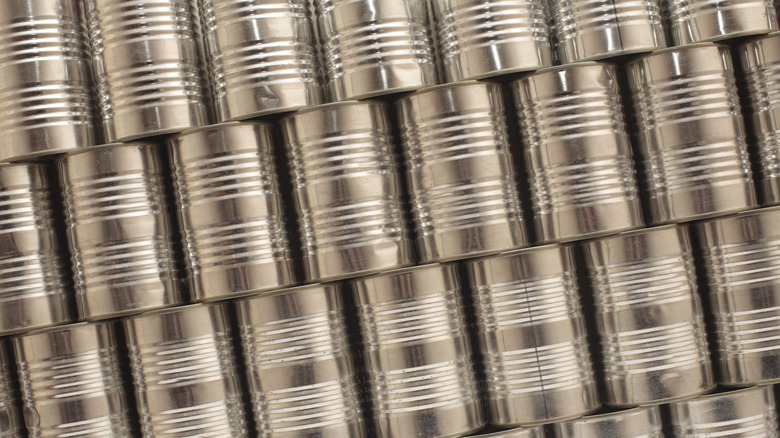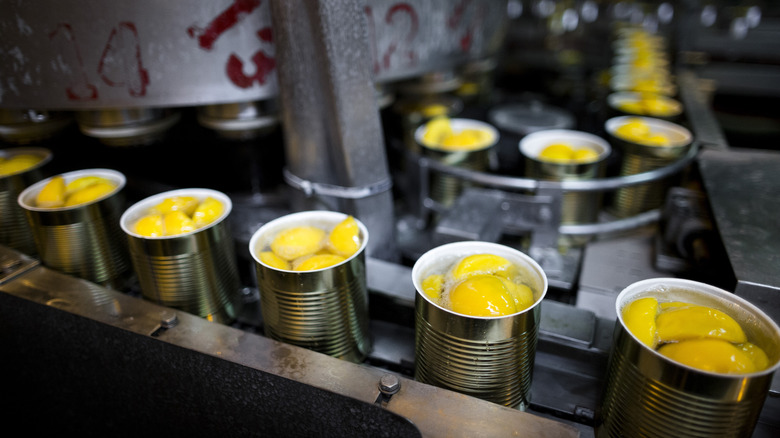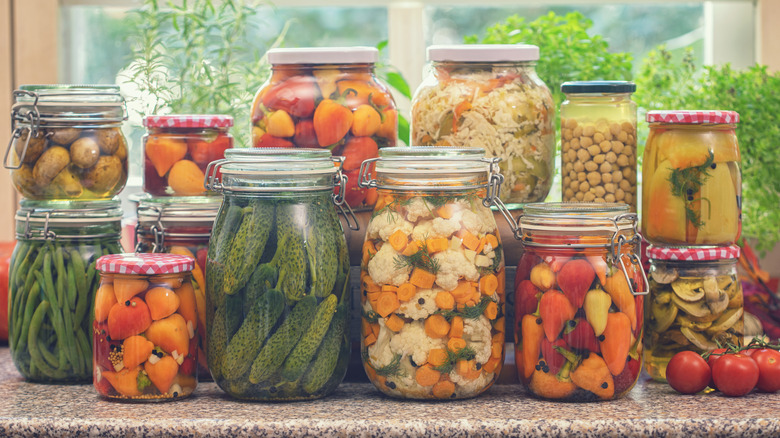The Science Behind How Food Is Canned Before It Reaches Stores
Food canning has been a process used by humans for hundreds of years to keep meals and ingredients fresh long past their usual best-by dates. The commercial canning process, or how food gets safely loaded and locked into cans for sale, is known as "hermetically sealing." This is an airtight sealing process that does not allow any other substances into the container — including those that might lead to bacterial or fungal growth.
Food can be hermetically sealed into cans, tins, cartons, plastic containers, and various other vessels as long as the container can be cooked in a pressure cooker after being filled with the food. The pressure cooker – also called an autoclave — cooks the food to 230 to 275 degrees Fahrenheit for a sustained period of time.
After this, the food is considered commercially sterile, meaning that dangerous bacteria and spores (including and especially those that propagate botulism) have been cooked out via the heat. It can then be safely stored at room temperature for a much longer period of time than it would have otherwise. That can sometimes be up to five or more years.
Getting the right time and temperature
How long a can should sit in the pressure cooker depends on a few things. There's no one-size-fits-all approach, namely because there isn't just one size of food container. Cans vary in size and shape, and though many of them share similarities (such as being ribbed to increase surface area), the size of the container and the ability of the food to conduct heat are variables that always need to be accounted for.
Canning facilities take each of these variables into effect when designing their canning processes, pinpointing the exact length of time and temperature depending on container size, food type, and more. With every new variable, important updates must be made to the process. For example, square containers are more likely to receive uneven cooking than round ones, with corners at risk for overheating or burning. Containers made from different materials may take longer to reach temperature.
Metal cans tend to be a good standard as they heat evenly, are airtight, are lightproof, and are able to be recycled easily. This makes them one of the best candidates for food storage, and the food saved inside will always last longer compared to other materials like cardboard.
Careful when canning at home
Though you can preserve food safely in your own kitchen, there are plenty of mistakes to avoid when canning at home. Home settings are not as sterile or precise as commercial kitchens or factories, and there is a much higher chance that bacteria may emerge without the use of professional equipment. This may be why it's rare to see people canning at home using tin or aluminum containers — most people opt for glass jars, as sealing metal cans requires the use of tools most people don't have easy access to in their own kitchens.
Still, home cooks have been canning jam, pickles, and other perishables for centuries, and as long as it's done properly, it can yield safe results. Following instructions carefully, making sure you're working clean, and choosing the right items to use in the process allow for the best possible outcome. At most, canned home goods last about a year and should be used up by the two-year mark. Compare that to the multi-year longevity of commercially sealed cans, and that's one quality that homemade just can't beat.


